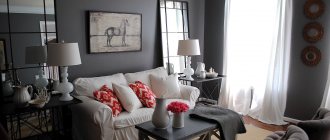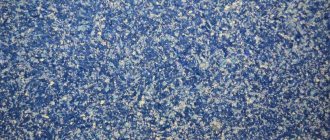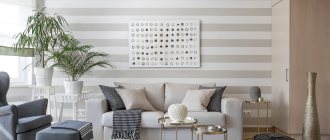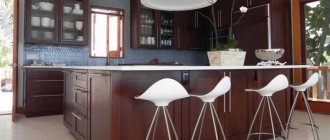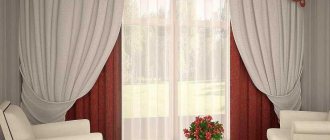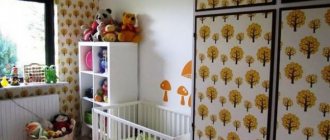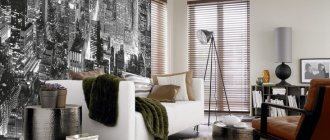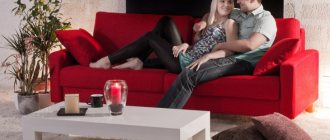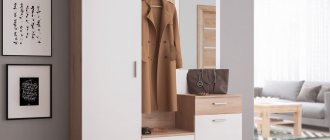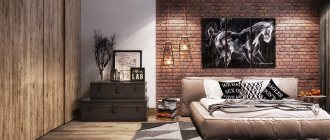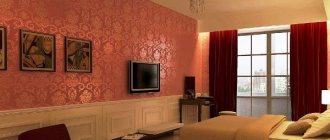Wallpaper companions for the hall
A stylish combination of multi-colored textured canvases helps to create an extraordinary living room design. New and unexpected combinations of wallpaper when decorating walls can not only emphasize the style of the interior, but also visually change the geometry of any room (corridor, hall, bedroom, bathroom).
How to wallpaper a kitchen with different wallpapers: photos of proper wallpapering
There are a number of rules according to which it is necessary to produce a combination of wall coverings. If you follow simple tips, the interior will turn out stylish and cozy.
Combination requirements:
- It is necessary to choose combined wallpapers of the same price policy;
- It is better to buy wallpaper of the same thickness to avoid problems with joints when gluing;
- The general appearance of the wall covering should be combined with the interior of the kitchen and correspond to its functionality;
- Different wallpapers should have something in common: ornament, color details, texture;
- Bright photo wallpaper covering the entire wall must be combined with a plain wall covering;
- Wallpaper with floral patterns is combined with wood motifs;
- When choosing abstraction, you need to take a closer look at wallpaper with geometric shapes;
- Bright colors should be combined with neutral pastel shades.
Related article: DIY metal garden swing: photos, dimensions, drawings
It is necessary to combine wallpapers of the same pricing policy and quality
All the requirements are quite logical. You need to create a harmonious design. Avoid cluttering the space with many patterns, colors, textures.
You need to calculate the number of rolls in advance and decide on the types of wallpaper.
A detailed plan needs to be created. It is necessary to determine which walls need a certain coating. In this case, it is better to buy wallpaper with a reserve.
One color scheme - different pattern or texture
This method of decorating a living room can be considered the simplest. However, before choosing wallpaper companions for the room, you have to take into account the style of the interior:
- canvases that imitate rough, untreated surfaces fit organically into modern interiors. Living rooms with an industrial touch are characterized by concrete walls, raw plaster, and brickwork. Surface shades can be different (for example, gray concrete, brown or terracotta brick, gray-beige plaster). In the Provence living room, the rural mood is emphasized by wallpaper imitating white brick or snow-white plaster;
- a fascinating play of designs and patterns can make the interior light and original. The easiest way is to combine patterns/ornaments and stripes.
A win-win option is to choose canvases in which the flowers are not arranged chaotically, but in orderly rows. The combination of striped canvases and wallpaper with geometric figures is perceived calmly and easily in a minimalist, high-tech environment.
The use of plain materials with a jacquard effect (contrast of matte and shiny textures) is a favorite technique of designers when decorating classic-style interiors.
Which color scheme is best for combining different wallpapers?
The easiest way to choose a color scheme for wallpaper companions in the interior is if you already have one priority shade.
A combination of three types of wallpaper is appropriate in spacious rooms
Designers use the “golden rules”:
- It is advisable to decorate the room only in shades of one part of the spectrum - cold or warm tones. The exceptions are white and black, pastel and non-spectral colors, which go well with bright favorites.
- White is a universal color, but when choosing rolls for decoration and background decoration, remember that white comes in yellow and blue. If you combine dairy with cold colors, they can look dirty or old. The crystal white walls of the interiors in warm colors convey a cold, unwelcoming atmosphere. The grayish white base color looks “dirty”, but will be “cleaner” in combination with dark inserts of emerald, burgundy, graphite or black.
- Wallpaper of the same color and different texture will look different under artificial lighting falling at an angle.
- Checks and lattice are combined only with plain wallpaper, abstraction with floral patterns, graphic patterns with stripes, floral prints with monograms.
Vertical dark stripes visually elongate the room
An interesting effect can be achieved by alternating plain stripes without a pattern, but with different textures. For example, cream-colored jacquard rolls reminiscent of textiles, where a matte pattern is applied to a glossy base, can be combined with a rough sand-type surface. During the day the walls will look monochromatic, but in artificial light they will show a multi-color play of shades on the difference in texture.
Each color has its own characteristics, and this cannot be ignored, since they all have different effects on the subconscious.
| 1. | Yellow (canary, lemon, fruit) | A traditionally “appetizing” cheerful color of a warm palette, it perfectly compensates for the lack of sunlight from northern windows, sets the mood for positivity, helps create coziness; the addition of yellow wallpaper is considered an ideal choice in the eating area. |
| 2. | Orange (peach, apricot, orange) | In combination with white and “warm” colors it encourages activity; it is added in a nursery or bedroom to activate melancholic depressed people, as the main color in a studio, living room, hall, kitchen. |
| 3. | Red (scarlet, red) | Active color, a symbol of passion, has bloody and other aggressive shades; they cannot be combined with black wallpaper in the bedroom and living room. Often used on an accent wall along with beige, but not as a main color. |
| 4. | Pink | A delicate background, has several floral shades, ideal for a woman’s bedroom or young spouses, “expands” the room, goes well with white and light green. |
| 5. | Lilac (lilac, lavender and soft purple) | Beautiful shades are rarely used in living spaces, with the exception of the bedroom, they create a mystical aura, subconsciously give a feeling of “hanging” between the past and the future, and are combined with cold colors. |
| 6. | Blue, light blue | Calms, but activates the mind, good for the office, combined with cold colors. |
| 7. | Green (mint, herbaceous, pine, salad, “green apple”) | These shades are rarely used as a base in modern interiors, with the exception of yellow-green in the kitchen. It has a beneficial effect on the optic nerve and is preferable for covering the work area near the computer. It “reduces” rooms and is undesirable with gray. |
| 8. | Black | Great contrast, but not as a base. |
| 9. | White | The ideal backdrop for any room, goes well with any color, including contrasting combinations. |
Blue shades are calming and suitable for rooms where people often gather for conversations.
Plain and patterned canvases are suitable for a compact room, but without bright colors.
For example, dark green in combination with thick gray is undesirable; designers call it “melancholy green.” But lettuce with pearl gray color is a good duo for the room of a teenager who experiences great emotional and intellectual stress in the external environment.
A successful combination of two pastel shades
Same texture – different pattern or color
A fashionable and popular trend is the use of wallpaper for painting. This is the best option for renovating a living room of any size. When choosing finishing materials, it is important to take into account the surface topography, since the walls can be repainted several times, but it will not be possible to change the texture. Wallpaper with a chaotic pattern is perceived pleasantly if the relief is shallow and rounded lines predominate. A simple and repeating pattern will give the decor a laconic character. The size of the relief also matters. Large drawings decorate the walls of the hall and attract attention. And a small pattern is quite capable of becoming a background for exquisite furniture. Textures that imitate untreated surfaces (brickwork, plaster, concrete) are recommended to be selected for specific styles (loft, Provence).
An excellent design technique that allows you to add dynamics to the atmosphere is to paint the walls in different shades. Thanks to this method, you can visually make the room larger or smaller. This is also a suitable option for designating zones for different purposes in the living room. In a studio apartment, pastel warm shades will bring peace to the relaxation area, and bright colors will add energy to the work area. Pleasant shades (orange, pistachio) will visually make the kitchen area appetizing and fresh.
Methods for gluing companion wallpaper
There are several universal ways to hang companion wallpaper in a room. These methods are called universal because they are suitable for absolutely any room and even any style, you just need to slightly adjust some details.
Let's look at the main options.
Vertical stripes
The simplest and most easily implemented method is vertical pasting. For it you will need two types of companion wallpaper. This can be wallpaper of the same texture, but of different colors, or wallpaper made in the same color, but with different patterns.
Attention! In order to be able to carefully paste the wallpaper in vertical stripes, select canvases of the same thickness. They will have to be glued end to end, which means that different thicknesses of the wallpaper will be too noticeable.
Features and possibilities of pasting a room with vertical stripes:
- symmetry: the central part of the room is highlighted by contrasting wide stripes. This way you can visually correct the elongation of the room;
- asymmetry: gives the room a feeling of dynamics, movement, life. At the same time, the room looks wider;
- vertical alternation: if you choose wallpaper of different colors, but the same texture or with the same pattern, then you can decorate a stylish striped room. You just need to glue the strips of wallpaper one by one. In this way, you can cover both an entire room and a separate wall. If you have chosen wallpaper in one color, but some are simple background, and the other with a pattern, then the most successful solution would be to use several stripes as decoration, and cover the main area with background wallpaper.
Accent wall
The accent wall in the room looks no less beautiful.
For this type of wallpaper combination, you just need to choose a wall on which all attention will be concentrated, and decorate it with decor
Important! Accent walls look good in any room, and if you wisely choose the color, pattern and, in fact, the wall itself, you can visually expand or reduce the room and hide its shortcomings.
In the living room there is usually a room with a TV or a room with a sofa. In the bedroom they prefer to decorate the wall at the head of the bed. An accent wall near the dining table would look best in the kitchen.
In the nursery, you can make any wall bright and cheerful, focusing on the colorful decor
Horizontal stripes
Pasting a room with horizontal stripes is a slightly more difficult task than with the vertical method of combining. To glue wallpaper horizontally, you must first make precise markings. Moreover, it will be necessary to measure from the floor: the strips should run parallel to the surface of the floor and furniture.
There are two main ways to paste companion wallpaper with horizontal stripes: either glue a strip across a strip, or create wallpaper in two levels. The first method is more suitable for modern interior styles, and the second - for classic ones. In this case, the joint is additionally decorated with a paper border or slats, which can be made of wood or plaster.
Features of pasting a room with horizontal stripes:
- stripe and small pattern: usually the wall is divided in proportions of 2/3 or 1/3 in height. The bottom is striped, the top is patterned or plain. The joint is decorated with a border;
- small pattern and large flowers/stripes: the wall is divided in a ratio of 1/3 in height. Below are plain, small patterns, at the top are large floral motifs, stripes, monograms;
- pattern and plain ones: the lower 2/3 are covered with large flowers, monograms, the upper part is covered with plain wallpaper.
Inserts
Wallpaper inserts come in different shapes and sizes, but they are almost always framed using moldings, light frames or borders. This type of design is suitable for a variety of design styles, but is most often used in classical and some historical styles. For interiors in a modern style, inserts are usually not framed.
Advice! Always start covering rooms from the window. The same goes for markup. Reaching the corner, the wallpaper is rolled up and overlapped, and the excess is trimmed.
Same pattern - different texture or color
The most common print, which can be easily depicted in different shades and textures, is stripes. Simple lines create a sea of possibilities for implementing design ideas. In order not to bother too much with repairs, it is better to combine original striped wallpaper and paintable canvases with a “matting” texture.
It is easy to change the color of the wallpaper for painting, so it will not be difficult to update the interior of the living room. In this case, you also need to take into account the style of the hall. For rooms with a classic mood, silver or golden tones are suitable. The tenderness of Provence will be emphasized by pastel colors (sand, pale blue, lilac, white). White, light shades of gray and brown will add austerity and detachment to living rooms in the style of hi-tech and minimalism.
Color combination ideas
Beige
The calm, universal tone goes well with a variety of colors. Beige harmonizes with bright and calm, warm and cold colors. It also successfully serves as a background. The best combinations will be with wallpaper companions in white, blue, emerald, red, brown and black. Depending on the partner’s color choice, companion wallpaper will look good in the interior of any room.
White
The white tone is harmonious with any colors. The combination can be soft or contrasting, the colors rich or pastel. A combination of white and blue, red or black will look especially good. Also, the texture is clearly visible on a white background.
Gray
The gray color of the wallpaper is harmonious with clean and dusty shades. Cold and warm gray tones are suitable for interior design in a modern style. The combination with pink and purple colors will look soft and gentle. Wallpaper companions of blue, red and fuchsia are a more contrasting, but no less successful combination.
Greens
The green tone of the companion wallpaper will look good with warm natural shades, such as brown, gray, orange, cream, gold and black. Eco themes will make the interior warm and the atmosphere soothing.
Black and white
The combination of black and white already looks complete and complete, they complement each other. However, yellow, light green, orange and purple shades can be an excellent companion to black.
Purple
The beautiful purple color will go well with gray, lilac, olive and white. Purple is suitable for interior design in a modern style. A rich shade is best used as a secondary shade.
Brown
Warm chocolate shade harmonizes with blue, turquoise, green and pink. Rich colors will stand out against a brown background. The combination with companion wallpaper in cream and beige shades is suitable for decorating an interior in a classic style.
The photo shows a loft-style living room. The walls are decorated with different types of companion wallpaper, some of them with imitation brickwork, others with plaster.
Pink
Pink color can be a delicate pastel shade or a rich fuchsia color. The light version of pink is combined with turquoise, light blue, mint, white, gray, olive and brown. For a fuchsia tone, the company will be accompanied by wallpaper companions of mustard, gray, and light green colors.
Blue
Companion wallpapers in white, grey, pink and yellow go well with a delicate blue tint. Among the bright colors to combine, red, orange, and brown are suitable. Depending on the partner color, the interior will be bright and rich or calm.
Golden
Golden accents will decorate the wallpaper with companion colors of turquoise, peach and gray. Gold looks impressive with companion canvases in brown, red and black tones.
Yellow
Sunny yellow combines well with cool shade companions: blue, blue, gray, black and lilac. Yellow color will add sun to the interior of the room.
Lilac
The lilac shade can be combined with companion wallpapers of cream, light yellow, pink, light turquoise and black. The shade creates a delicate combination even with dark colors.
Turquoise
Refreshing turquoise will be a good companion to brown, black, dark pink, beige, white and yellow. A good addition would be golden or silver elements.
Original ways to combine wallpaper
Manufacturers offer such a wide range of wallpapers, differing in texture, color, patterns/prints, that it is not difficult to decorate living rooms with a non-standard look. To ensure that the interior has a harmonious look, designers have created several basic ways of combining materials.
Accent wrap
The simplest and most common technique for giving the interior a dynamic and original look is to visually highlight one wall or a pair of adjacent partitions with color. These are also great ways to disguise imperfections in small spaces (Khrushchev-era buildings) or to distract attention from the irregular shape of the living room.
An accent wall is usually decorated with wallpaper in a richer tone than the color of other partitions. Manufacturers also offer collections of companion wallpapers, consisting of plain canvases and rolls with patterns and ornaments.
Accent stickers are also used to attract attention to a certain piece of furniture. Moreover, the focus can be on different things - a fireplace, an antique chest of drawers, an art gallery. Naturally, the shade of the accent area should serve only as a background. Therefore, it is better to choose smooth wallpaper in pastel shades, which will be 2-3 tones different from the rest of the walls or create a soft contrast.
Canvases with a rich texture or decor can be made into a kind of wall carpet or picture if they are decorated with moldings and a frame. The accent element is formed by wallpaper from different fabrics or repeating patterns.
Zoning
Spacious living rooms or halls in houses and studio apartments are most often used multifunctionally. In such rooms, thanks to radical and bold combinations of wallpaper, it is easy to designate areas for different purposes. It all depends on the preferences of the owners.
A common design technique for zoning a living room is the use of a color palette. Pastel-hued wallpaper companions in the bedroom interior will help you relax and get ready for sleep. The reception area should be elegant, so it is advisable to stick wallpaper in rich colors (purple, turquoise) or canvases with patterns. The dining area or study is decorated with bright materials that create a cheerful mood.
Naturally, the overall interior of the living room should look organic. Therefore, in different materials there is always a unifying element - similar shades of the same color, the same surface texture, a similar pattern or ornament.
Niche decor
Special room designs are distinguished by bright shades or original textures and patterns. Most often, wallpaper in neutral shades (gray, beige, brown) is chosen for the main background of the living room. The easiest way to decorate a niche is in a white room, since any duet of colors will look bright and organic. Decorating a niche with rich colors (red, blue, dark green or burgundy) will give the room an elegant look. And the use of pastel shades (pale gray, blurry blue, ash pink) will make the living room more peaceful and calm.
The decoration of niches with photo wallpaper deserves special attention. The most interesting thing is to choose pictures with a 3D effect or a panoramic view. When choosing images with cities and nature, it is important to find paintings that will organically fit into the size of the niche.
A common option is to highlight the recess with textured wallpaper. This technique looks great in Provence and loft interiors, especially when the surface imitates brickwork. In an English-style living room, a niche is decorated with textile wallpaper in a red and green check. In a classic-looking room, you can install a fireplace and decorate the wall with canvases with gold patterns.
Paired wallpaper for each room
10 decor rules: dark wallpaper in the interior
Skillfully selected companion wallpaper can decorate absolutely any room
It doesn’t matter what size it will be or what its purpose will be. The main thing is to remember: you always need to stick to the chosen style, select the necessary materials and not be lazy in planning the placement of paintings on the walls in advance
Kitchen with companions
When choosing wallpaper companions for the kitchen, it is important to remember that this room is a place of active work, so functionality here will be valued above all else. Based on this, the main criterion for choosing wallpaper companions should be the raw materials from which the wallpaper material was made
You need to choose high-quality, easily washable, moisture-resistant wallpaper with good wear resistance. If they are also additionally impregnated with fire-resistant materials, so much the better.
Style can be very different. Rustic style canvases look very cozy. You can see this for yourself just by looking at what the wallpaper companions for a country or Provence style kitchen look like in the photo.
By the way, gluing such wallpaper is quite easy: horizontal zoning in two tiers is achieved by the contrast between the dark lower wallpaper (often striped) and the upper light one (with floral patterns or rustic pastorals). The joint is usually decorated with a border: decorative or natural (wooden).
The wall near the table is most often used as decor in the kitchen. In addition, sometimes decorative canvases are used to decorate any other wall that is not located near the sink and work surface, so that the wallpaper does not deteriorate from moisture or grease.
Tip: vinyl and non-woven wallpaper companions are best suited for the kitchen. You should not glue paper, textile wallpaper, wallpaper made from natural materials or acrylic. All these types of wallpaper deteriorate quite quickly and strongly absorb odors, so the aroma of delicious cutlets risks settling in them for a long time. There are exceptions - wallpaper made of wood, cork and bamboo wallpaper.
Choosing Bedroom Companions
Companion wallpaper will also be an excellent choice for decorating a bedroom. You can choose a very different style. Typically, designers like to use the style of English classics or classic European.
English Provence is used to give a romantic, calm, gentle mood. To decorate a bedroom in this style, you will need wallpaper with flowers and stripes or other suitable ones. The walls are divided horizontally. The lower, smaller part will be covered with darker wallpaper (or striped wallpaper), the upper part will be covered with canvases with floral or plant patterns. The joint is decorated with a border. Colors should be soft, pastel, light.
For a classic interior style, you can hardly find anything better than highlighting a wall with a headboard for this decor. In the bedroom, wallpaper in two colors will immediately create an elegant, luxurious look and emphasize the majesty of the interior. Sometimes, to give greater effect, the decorative canvases even continue on the ceiling, which further emphasizes the sophistication and creates the necessary zoning.
Decorating a children's room
Where you can fully express all your wild flights of fancy is in the child's room. Wallpaper companions for a nursery are an excellent solution for those who want to enliven the room, make the room cute, bright and cheerful. Here you can use any style and options for wallpapering walls: an accent wall, patches, or wallpaper inserts will look very good. If you want to achieve a more strict design, use vertical or horizontal zoning.
Important! In a children's room, it is best to highlight a play area: here bright canvases will stimulate imagination, but will not distract from studying or interfere with falling asleep.
Companions in the living room
A real haven for the designer’s soul is the walls of the living room. They can be made in absolutely any style, and wallpaper companions will help a lot with this. Use plain wallpaper if you want to emphasize the chicness of your furniture, or cover the room with bright companions - all the same, the hall or living room will look very beautiful and original. The main thing is not to forget about the rules for selecting canvases and follow the chosen style.
There are a lot of options for using wallpaper of two colors in the living room; often even large collections of photos cannot convey the full breadth of possibilities for combining wallpaper in the kitchen, living room, bedroom and even office.
A correct and balanced approach to interior color design will allow you to beautifully decorate any room with the help of companion wallpaper. The main thing is to follow the simple rules outlined above, put your whole soul into interior design and know for sure that you will get a real masterpiece.
Wallpaper companions in different interior styles
If you skillfully combine different materials, you will be able to elegantly indicate the features of different interiors:
- The pomp and majesty of the Empire style can be easily emphasized with an original combination of luxurious wallpaper. Floral and patterned fabrics (poppies and stripes of openwork ribbons) are combined elegantly and freshly. In general, the style accepts various images: Egyptian themes and landscapes, exotic pictures. Color palette – golden-silver;
- The baroque direction in the living room will be effectively emphasized by a duet of textured wallpaper (with imitation modeling) and canvases with intricate patterns. Moreover, it is desirable to have elements with a frame design in the patterns;
- a classic-looking interior is a win-win option for using companion wallpaper. The traditional option is a combination of plain vinyl textured and smooth canvases. The living room looks more intricate, with patterned and striped wallpaper. To give the interior of the room a finished look, materials of the same color range are selected;
- Curtains, wallpaper with small flowers (roses are most often used), stripes or checks and plain canvases with imitation plaster will add coziness to the Provence living room. An interesting solution is combined wallpaper, consisting of rolls with white “brickwork” and canvases in a small floral print. This is an ideal combination, since white color is “friendly” with any shades;
- Rough textures give the loft style an industrial character. This feature in the living room can be easily created with wallpaper that resembles a concrete surface in different shades. A stylish option is to choose canvases of the same color palette, imitating brickwork and rough plaster.
A fashionable modern interior of a minimalist hall can be easily recreated with the help of laconic photo wallpapers and plain canvases. The style best suited are black and white photographs or paintings with abstract patterns, geometric patterns and simple lines. Main color palette: gray, light yellow, beige, white, black tones.
Combining wallpaper is a “multifaceted” design technique. If you correctly combine different materials, it will be easy to emphasize the advantages and disguise the shortcomings of the room, highlight the stylistic features of the living room, and focus attention on certain furnishings.
Choosing a living room interior style with companion wallpaper
It’s worth finding out in detail which companion wallpapers are suitable for each stylistic direction of the living room:
- Vanguard. Companion wallpapers can be plain, but with different textures or patterns. Poppies and tulips in various variations will look stylish and original.
- Empire style Here it is best to choose wallpapers with majestic patterns, as well as exotic landscapes and Egyptian motifs.
- Baroque. Here it is best to use companions that imitate sculpting. Lush patterns with intricate lines are also suitable.
- Oriental. Companions can be with matching ornaments and arabesques. Characteristic geometric shapes.
- Country. Horizontal zoning is preferable here. Wallpaper should imitate natural finishing materials.
